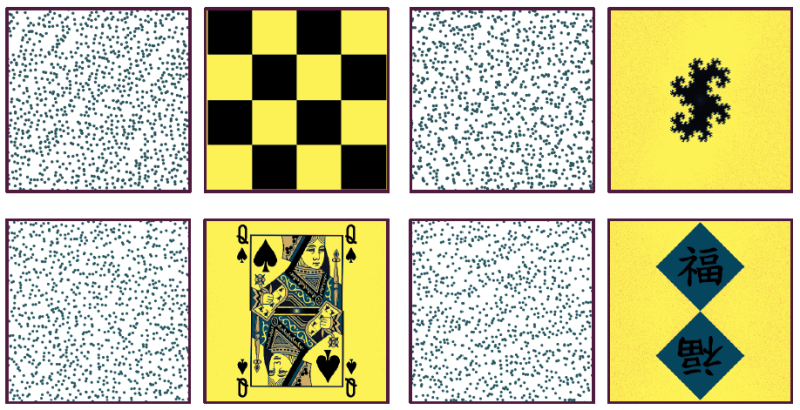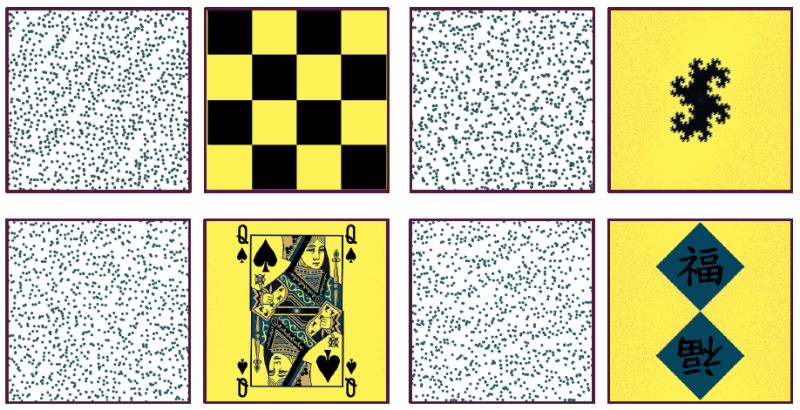Old Movie Demos New Tech
Special coatings containing a disordered arrangement of particles can produce colors and patterns in light scattered from the particles. A research team has now developed an algorithm that can rapidly determine an optimum arrangement of particles for a desired output [1]. The team demonstrated the algorithm on a famous 1896 movie—an important film in the early history of cinema. For each frame of the movie, the algorithm determined the appropriate positions of 300,000 particles in a 2D plane. The researchers showed that the combined scattering of these particles produced the complex shapes and grayscale colors in the film. The new technique could potentially lead to new coating designs with novel and practical light-scattering properties.
A periodic arrangement of particles as in a crystal scatters light in a uniform way that produces an ordered pattern of spots on a screen. By contrast, a nonperiodic arrangement can produce a much wider range of scattering patterns. For example, many researchers have generated 3D configurations that are opaque to a range of frequencies of light, regardless of the propagation direction, a property that could be used in coatings. But working backward from such desired properties to the positions of particles is computationally challenging and slow, so researchers haven’t yet done so for structures larger than 100 particles across.
Now Aaron Shih, Mathias Casiulis, and Stefano Martiniani of New York University have developed Fast Reciprocal-Space Correlator (FReSCo). “Our algorithm can optimize structures with billions of elements on a single CPU node within hours,” Casiulis says. This fast processing could allow researchers to design coatings and other surfaces that scatter light in any arbitrary pattern. The old movie demo shows that it works for a complex light pattern that changes with time.
Another application could be image rendering for video games and animated films. Casiulis explains that the 3D accuracy of such computer graphics depends crucially on the choice of sample points—locations in the plane of the virtual camera at which the graphics software calculates the net light intensity. He says FReSCo ought to be able to optimize the choices for these points—and do so more rapidly than current techniques.
–David Ehrenstein
David Ehrenstein is a Senior Editor for Physics Magazine.
References
- A. Shih et al., “Fast generation of spectrally shaped disorder,” Phys. Rev. E 110, 034122 (2024).
More Information
This work was the subject of a winning video in the APS Gallery of Soft Matter 2024.





